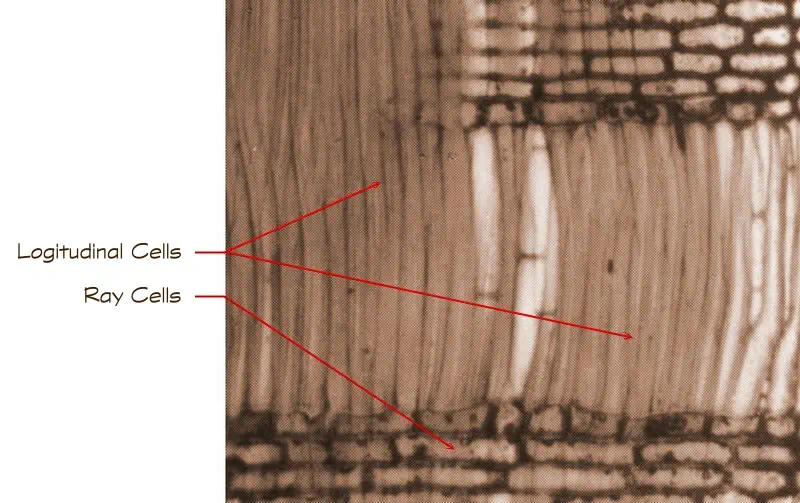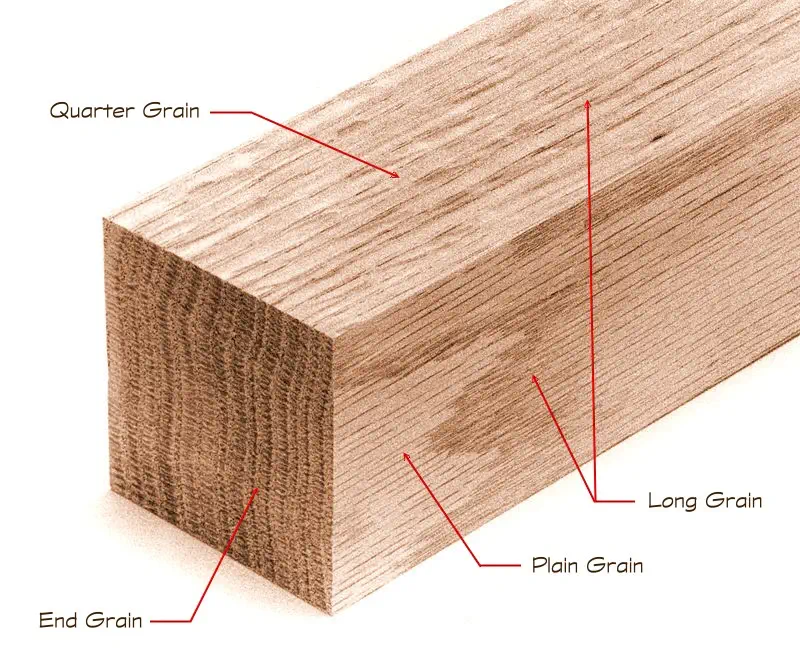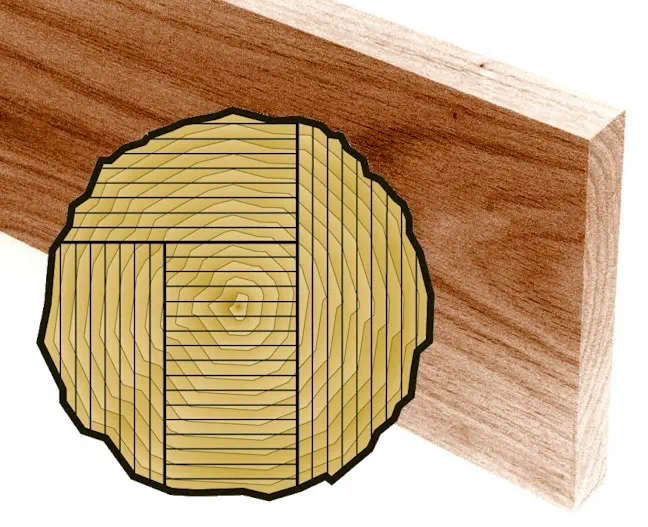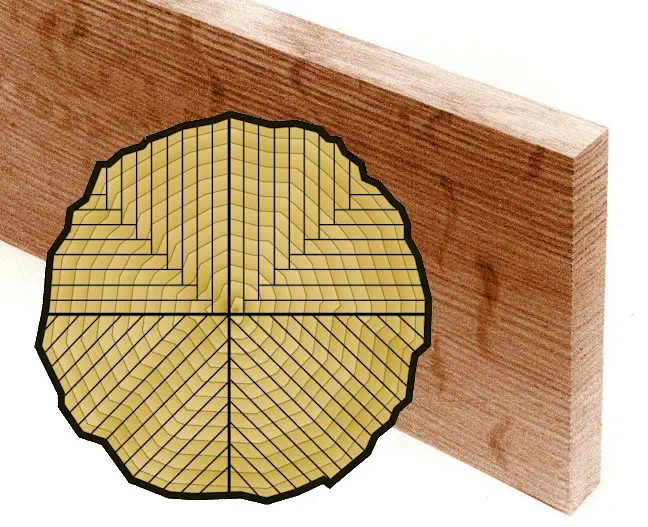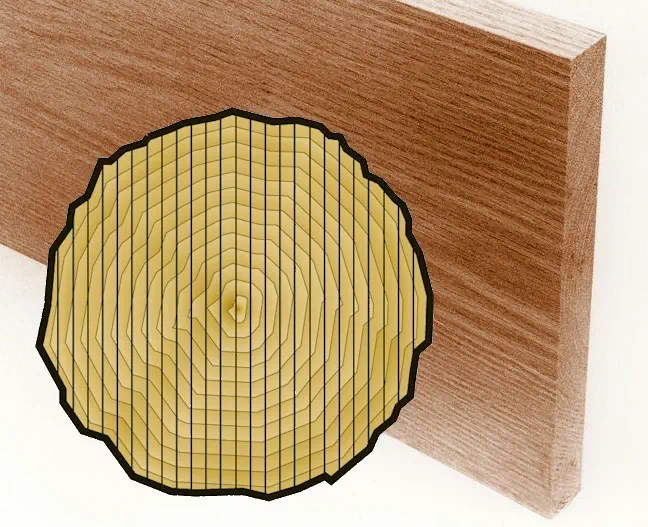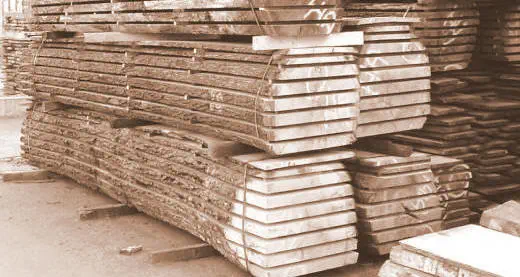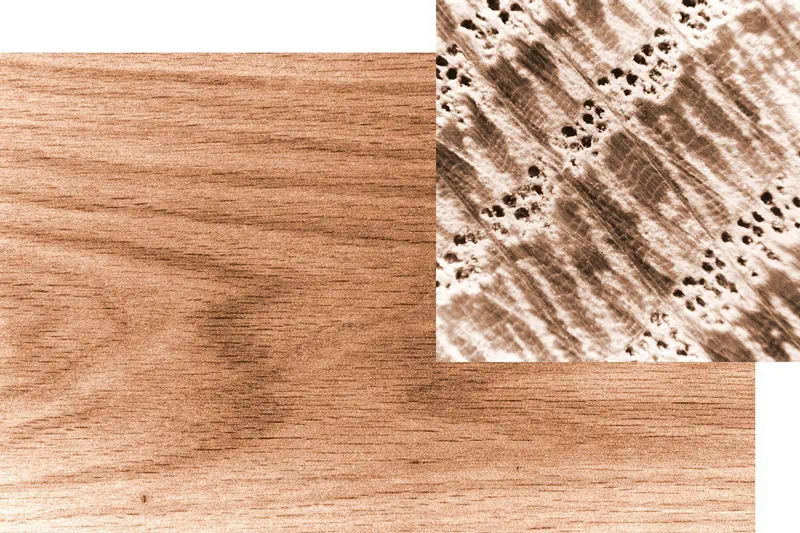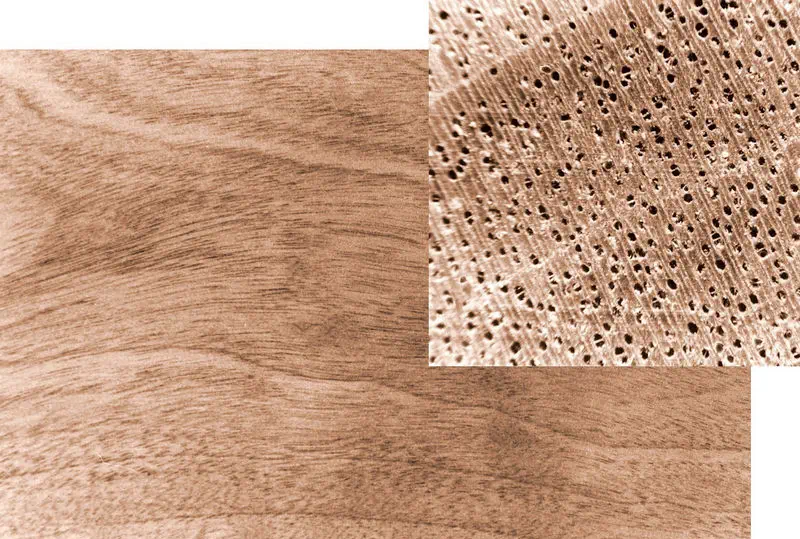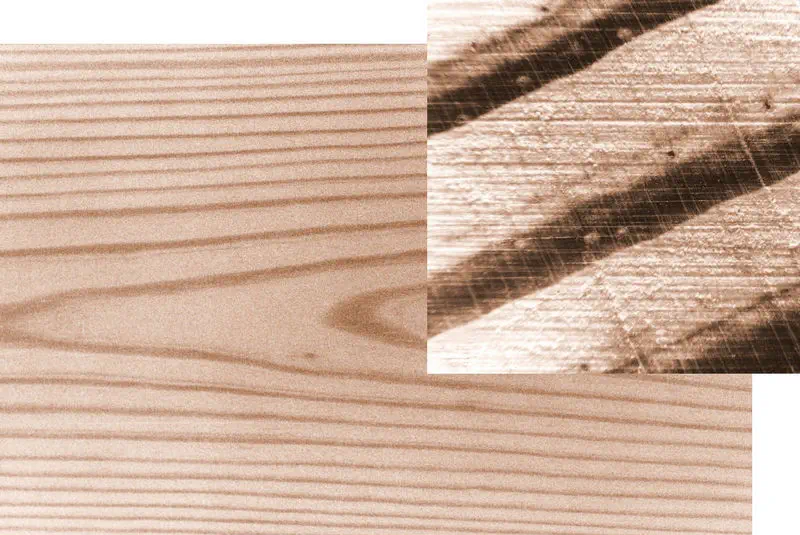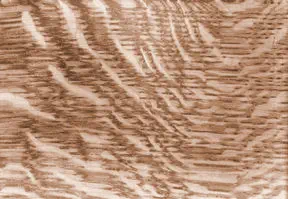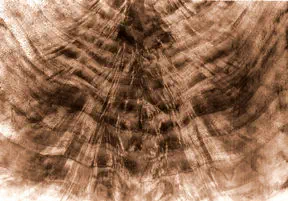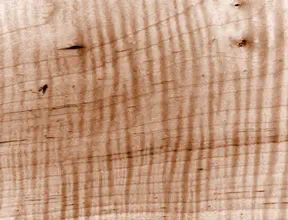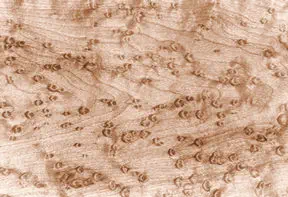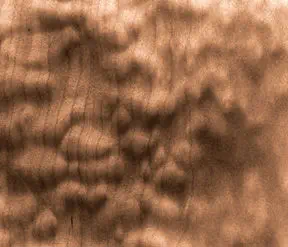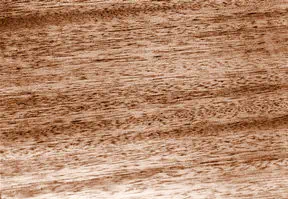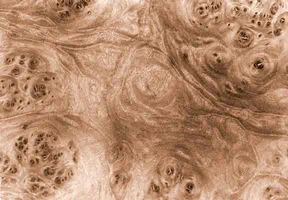HOW WOOD GROWS
At the very center is the pith. In some trees, this is much softer and possibly a different color than the surrounding heartwood. Heartwood is made up of dead cells that no longer serve any purpose except to support the tree. Next is the sapwood, which carries water, minerals, and plant sugars between the roots and the leaves. This is often lighter in color than the heartwood. Outside the sapwood, close to the surface, is the cambium, a thin layer of living cells. These cells manufacture the wood as they grow. The cambium is covered by a protective layer of bark. The cambium grows rapidly at the beginning of each growing season, creating light colored springwood. As the climate warms, it slows down and produces darker summerwood. This later growth is somewhat denser and harder than the early springwood. As the weather turns cold, the cambium becomes dormant until the next spring. This cycle produces distinctive growth rings.
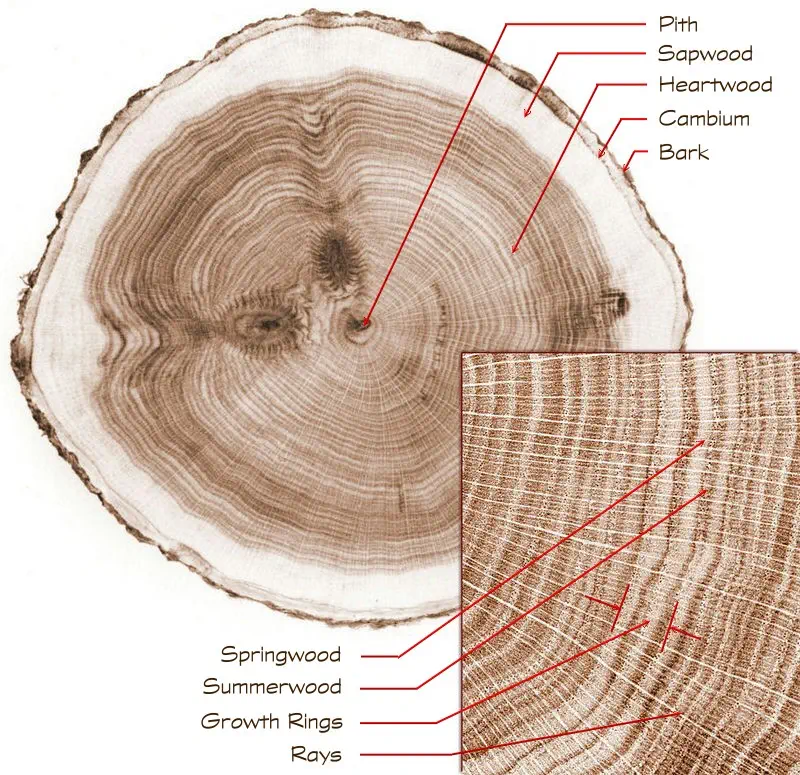
Wood grows in concentric layers, or growth rings.*


